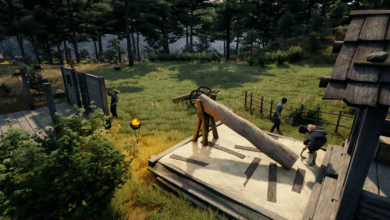Mastering Sengoku Dynasty: The Ultimate Beginner’s Guide
Key Takeaways:
- Stock Up on Backups: Always carry spare weapons and tools to avoid being caught empty-handed.
- Prioritize Key Quests Early: Help Chiyone first to get valuable farming resources and early perks.
- Optimize Stamina and Strategy: Monitor stamina in battles and be prepared to strategize for effective resource use.
Building a thriving village in Sengoku Dynasty is no small feat, especially if you’re starting from scratch. This medieval Japanese survival game has a learning curve as you gather resources, tackle enemies, and complete quests. However, once you get the basics down, you’ll be well on your way to establishing a powerful dynasty. This guide covers beginner tips to help you navigate Sengoku Dynasty’s complex gameplay and build a prosperous settlement.
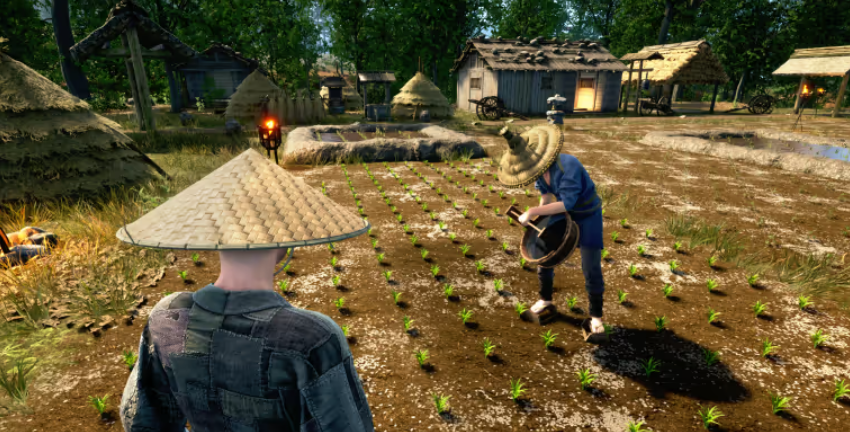
Building the Foundation of Your Dynasty
Building a village involves gathering materials, constructing essential buildings, and managing resources efficiently. If you’re coming from similar games, you’ll notice that having a reliable supply of materials and strategic planning are crucial here.
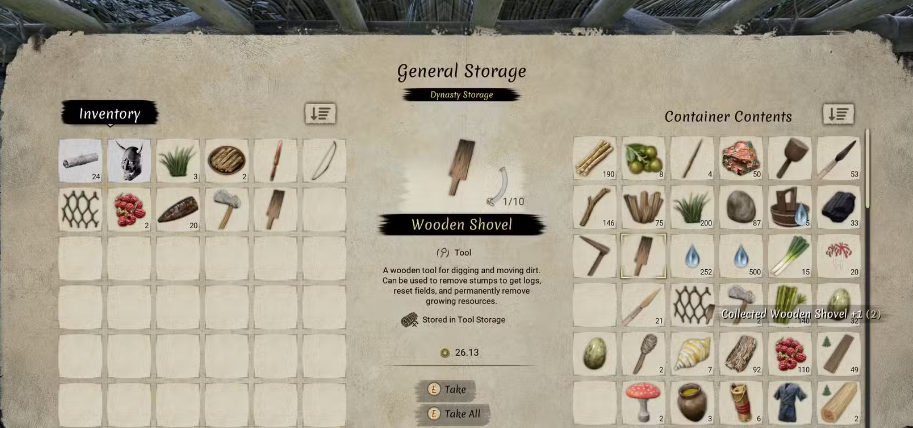
Avoid Crafting Unnecessary Tools:
The adze, a tool for debarking trees, is often unnecessary in the early game. Instead, gather planks from ruins found in Sosogi, where you can chop down burnt buildings with your axe. This method provides plenty of wood for initial construction, saving you materials and stamina.
Early Tool Preparation:
One of the most important lessons you’ll learn quickly in Sengoku Dynasty is that tools and weapons can break often at the worst times. Thankfully, the game will auto-replace a broken item if you have a duplicate in your inventory. This means it’s essential to carry backups, whether it’s an axe, bow, or knife. Imagine you’re deep in the forest chopping trees only for your axe to snap; with no replacement, you’d be forced to return empty-handed. Plan ahead, especially for resources far from your home base.
Essential Early Quests for a Head Start
Quests in Sengoku Dynasty offer more than just rewards; they also give you a strategic advantage. Some quests yield items and blueprints that are extremely useful in the early stages.
Complete Chiyone’s Quest First:
After building your first house, you’ll meet Toshichi, who will direct you to three villagers needing help. While you can choose whom to help first, prioritize Chiyone, the shrine maiden, who offers a quest to cook an egg and present it to the Shrine of Inari. Completing this quest rewards you with Gobo Seeds, which are critical for starting your crop-planting. Plant these before spring to ensure a solid first harvest, which will set you up for success.
Get a Free Blueprint from Kengyo’s Quest:
Another quest from Toshichi is to help Kengyo, which teaches you hunting skills and rewards you with a free blueprint for the Hare Box Trap. While you could buy this blueprint with your coins, completing Kengyo’s quest lets you save that money for other essentials. For this quest, head to the bandit camp west of Kengyo’s outpost, where you can kill a caged boar for meat to complete the task.
Combat Strategies for Beginners

In Sengoku Dynasty, combat isn’t just about powerful weapons; it’s about strategy, timing, and stamina management. Here are some tips to help you win fights early on.
Stamina Awareness:
During combat, your yellow Stamina bar is everything. It allows you to dodge, parry, and attack. Enter each battle with full stamina and avoid wasting it on unnecessary moves. Defensive fighting lets you conserve stamina until you can break through an enemy’s guard. Once you’ve broken their defense, you’ll find it easier to do so repeatedly, allowing you to go on the offensive.
Death Isn’t the End:
Dying in Sengoku Dynasty isn’t as punishing as in some games. If you’re defeated, you’ll be transported back home with low Health and Food and lose only 10% of your coins. While this might sting if you’re carrying a lot of cash, it’s manageable if you’re just starting out. This lenient system gives you room to take risks, so don’t shy away from challenging fights if there’s a chance for good rewards.
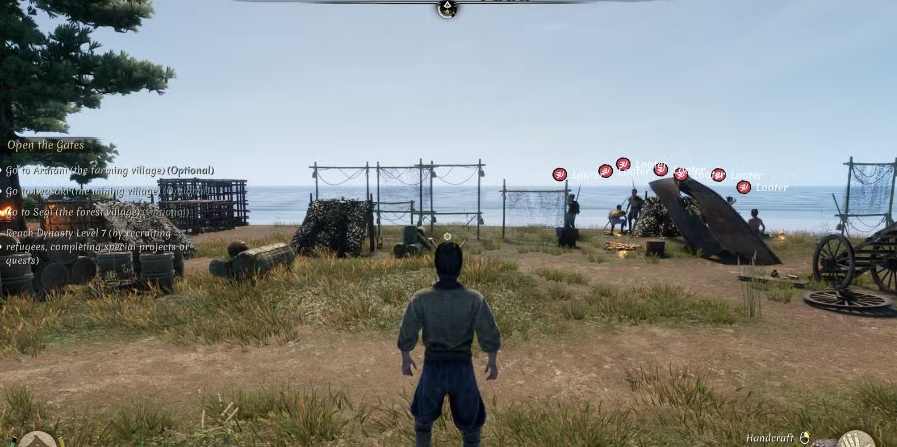
Earning Money: Hunting Bandits and Strategic Raids
Coins can be hard to come by in Sengoku Dynasty, especially in the early game. A reliable way to make money is by fighting bandits, who drop coins and loot that can help fund your settlement’s growth.
Focus on Bandit Camps for Quick Cash:
Many early-game bandits are found in the Sosogi, Mountain, and Rebel regions. These bandits are often lightly armed, so even with beginner weapons like the Copper Yari and Peasant Clothes, you’ll have a good chance of defeating them. Each kill adds to your coin stash, and some bandit camps have valuable loot hidden in crates. For a bigger challenge, try raiding the Looter Camp northwest of Sosogi, where defeating their leader will net you access to Copper tools and additional resources.

Managing Your Village Effectively
Once you’ve gathered villagers, managing their assignments is essential to ensuring your village’s success. Resources and job needs change with the seasons, so regular reassessment of village tasks is key.
Seasonal Job Rotation:
As resources vary by season, you’ll need to update villagers’ assignments to keep production efficient. At the start of each season, conduct an audit of tasks to prevent a surplus of one resource while neglecting others. For example, prioritize crop collection in autumn and assign woodcutters in winter. Efficient management allows your dynasty to prosper while minimizing your workload.
Assigning Villagers to Key Roles:
As your village grows, assign villagers to specific roles like the Woodcutter, who can debark logs and produce planks without needing adzes. Once the Woodcutter’s shop is functional, this task is automated, giving you more time to explore or take on other quests.
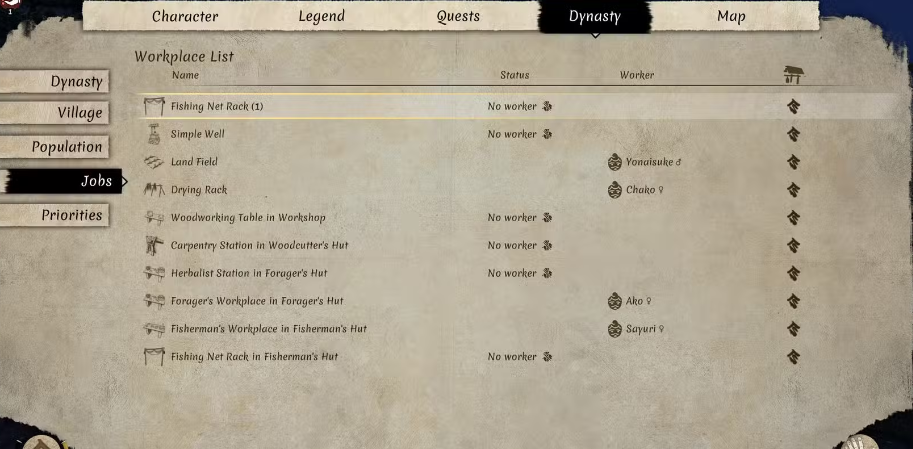
Avoid Unnecessary Purchases
Every coin counts in Sengoku Dynasty, so avoid spending on items you can acquire elsewhere or don’t need right away.
Hold Off on Early Purchases:
Some items, like the Hare Box Trap blueprint, may seem tempting to buy but can be obtained for free through quests. Save your coins by completing Kengyo’s quest to get the Hare Box Trap instead of buying it. With merchants scarce and resources precious early on, conserve money for critical items or seeds when you’re ready to expand your farm.
Sengoku Dynasty is a rewarding but challenging game, and these beginner tips will help you establish a thriving dynasty. By preparing for unexpected situations, tackling key quests early, and managing resources wisely, you’ll be well on your way to building a powerful village.
Frequently Asked Questions (FAQs)
1. What’s the best way to earn coins early in Sengoku Dynasty?
The best way to earn coins is by fighting bandits in regions like Sosogi and the Mountains. Bandits are lightly armed, making them manageable, and each kill provides coins and loot that can be valuable.
2. Should I craft an adze early on?
No, crafting an adze is unnecessary early on. Instead, gather planks from burnt buildings in Sosogi, and eventually, assign a Woodcutter to debark logs for you once you have the shop set up.
3. How do I keep my villagers productive year-round?
Seasonal job rotation is key. Every season, assess resource availability and reassign villagers to tasks like farming, woodcutting, or gathering based on the time of year to keep production balanced.
4. How does death impact my progress?
If you die, you’re sent back home with low Health and Food and lose 10% of your coins. This is relatively mild, so it’s not a huge setback. You can quickly recover by resting, eating, and continuing quests.
5. Why is Chiyone’s quest so important?
Completing Chiyone’s quest rewards you with Gobo Seeds, which are valuable for starting your crop-planting. Planting these early can provide a reliable food source and income for your dynasty.





